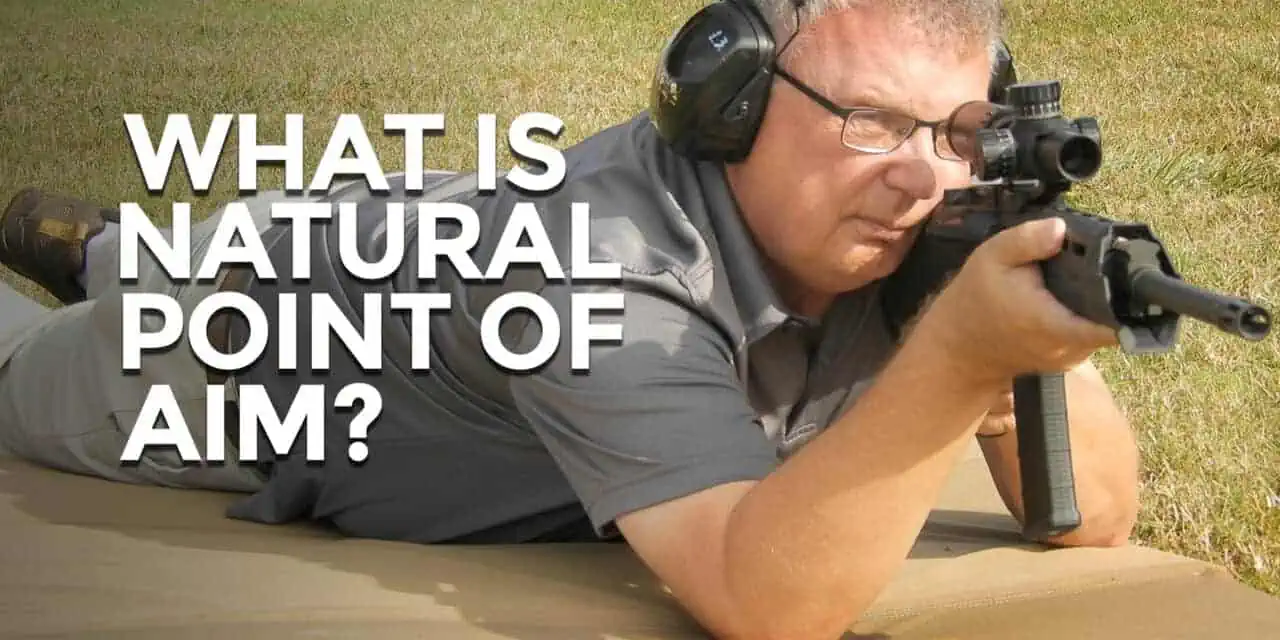Finding Your Natural Point of Aim
It’s not uncommon to see people on a public range grow frustrated as they struggle to hit their target. Something that seems easy, such as getting shots on paper at 25 yards while shooting a rifle off a bench, can seem impossible at times. One of the reasons why things like this happen is a lack of understanding of how to build a stable shooting position, and that begins with your natural point of aim.
Let’s begin by stating the obvious: Our bodies have a natural, comfortable position for almost any activity. Walking, running, standing, sitting, you name it, our bodies instinctively tend towards finding a comfortable position that can be maintained for hours.
The same is true for the shooting sports. There will be a position where your body is relaxed and comfortable and your sights are on target. This is called your natural point of aim. Finding that position, though, can be a bit of a challenge.
A Natural Point Of Aim Should Feel… Natural
Your natural point of aim is quite literally where the gun is pointing when you are not trying to force it or push it on-target. Sounds good, but that natural point of aim is probably not pointing at your target. The benefit from shooting in a comfortable, neutral position is making your shots, and if your sights aren’t on target when you’re comfortable, something has to change.
What changes is your natural point of aim. For instance, let’s say you’re shooting a rack of falling steel plates on the range. You get a good grip on your pistol. You settle down into a good shooting stance. You raise your pistol up, and your sights aren’t on target. What happens next?
Well, for most of us, we move our gun onto target and leave our grip and our stance as is.
When we do that, however, we are forcing our muscles to keep the sights on target, rather than just letting our body do its thing. Think about it: It doesn’t take a lot of effort to keep yourself sprawled out in an easy chair. A good natural point of aim should require about the same amount of effort to keep your sights on-target.
Work With Your Body
Finding your natural point of aim is quite easy. Get into your shooting stance, bring your gun up onto the target. Align the sights, and get a good sight picture. Now close your eyes. Are your sights still on-target? If they are, that’s great, you nailed the natural point of aim on your first try. If not, you’ll need to move your body around to acquire a natural point of aim.
To get that natural point of aim, we’ll make subtle adjustments to our stance and positioning to move things around instead of forcing the sights on-target. Think of it like wriggling around in your chair at the table to get a little more comfortable. We’re still relaxing and sitting in a chair, but things are just a little bit more comfortable now because our body position is slightly different.
Prone, Seated, Standing, It’s All Good
There are two directions to move your sights to bring them on-target: Left and right, and up and down. We’ll talk about how to make this happen when shooting long guns from three common shooting positions: Prone, sitting and standing.
In the prone position, the movement of your sights up and down on the target by moving your support elbow towards you or away from your body. Moving it towards your body will bring the sights up, and moving it away from you will move the sights downwards. Moving your sights left and right while prone requires subtly moving your hips on the ground right and left as you lie on the ground.
Shooting from the sitting position requires similar movements. No matter which variation of the sitting position you choose, your support arm will be resting on a knee. Moving that knee is going to move your sights up and down. Moving your sights horizontally is accomplished by moving your hips left and right and adjusting how you are sitting on the ground.
Take A Seat
Creating a natural point of aim while standing is a bit more difficult. The rifle or shotgun is held in our arms, away from any support we might get from the ground. The temptation to move your arms to get your sights on target rather than use natural point of aim. While you definitely can get a good sight picture just by moving your arms while standing, maintaining that sight picture during rapid fire or during follow-up shots is a lot easier if your body position allows you to naturally place the sights where they should be.
Just like in the prone position, the control of the up and down movement of the sights is done with subtle movements of your support hand forwards and backwards along the stock. Moving your feet so your whole body turns is the best to adjust your aim left or right when shooting while standing.
Right now, you may be asking yourself, “Why bother with all of this? Why not just walk up to the firing line, get into a shooting position, raise my gun up and start shooting away?” and to be fair, that might work for a shot or two. However, as we’ve said before, the key to good marksmanship is consistency, and a consistent stance begins with embracing your natural point of aim. The more you can make yourself work with your gun and not fight against it, the more accurate you’ll be and the faster your sights will get back on target. After all, shooting guns is a lot of fun, but shooting guns and hitting where you’re aiming? Well, that’s even more fun.



